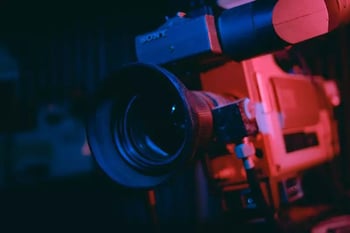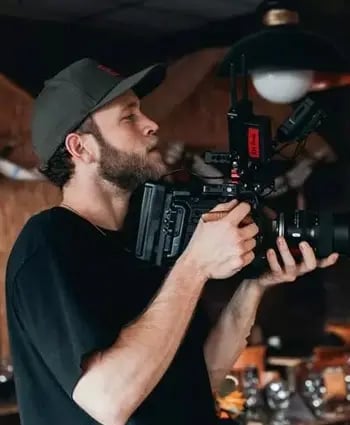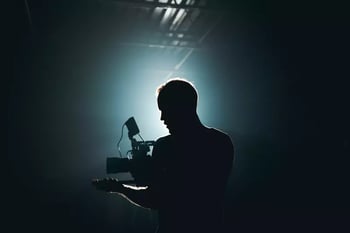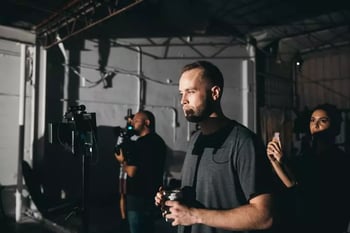Camera Work: Techniques and Tips in Video Production
From mastering tripod shots to understanding depth of field, his guide unpacks the art of creating captivating visuals.
Crafting a compelling video isn't just about the story or the subjects; it's also about how you choose to capture them. As the eyes of the audience, the camera can make or break your production.
With the right techniques in your arsenal, you can elevate your project to professional standards. Let's delve into the world of camera work and explore essential techniques and tips to sharpen your skills.
1. The Power of the Tripod
The most basic yet powerful tool, a tripod guarantees stability.
-
Static Shots: For interviews, landscapes or situations where you want to focus the viewer's attention without distraction, nothing beats a tripod.
-
Tip: Invest in a tripod with a fluid head for smoother pans and tilts.
2. Handheld Shots
Handheld doesn't mean shaky. It can introduce a raw, personal touch to your scenes.
-
Getting it Right: Soften your steps, keep your elbows close to your body, and use a strap for added support.
-
Use Cases: Action sequences, following a subject, or creating a documentary feel can benefit from a handheld approach.
3. Panning and Tilting
Panning (horizontal movement) and tilting (vertical movement) can bring dynamism to your shots.
-
Smooth Movements: Always pan or tilt with a purpose. Start and end with a static frame and avoid jerky movements.
-
Tip: Decide on the speed before the shot, and practice a couple of times to get the right feel.
4. The Dolly/Tracking Shot
Moving the entire camera setup smoothly in a linear motion can create some breathtaking shots.
-
Equipment: While professional dollies are great, even a wheelchair or a smooth surface with a stabilised camera can do the trick.
-
Application: Use it to introduce a setting, follow a subject, or create a sense of movement within a narrative.
5. The Crane/Jib Shot
Elevating or lowering the camera can give an epic feel or a bird's-eye view.
-
Creating Scale: Perfect for establishing shots or revealing a setting in its entirety.
-
DIY Approach: While professional jibs can be costly, you can also find budget-friendly alternatives to achieve similar effects.
6. Zoom vs. Dolly-In
There's a significant difference between zooming into a subject and moving the camera closer using a dolly.
-
Zoom: It changes the focal length and brings the subject closer without moving the camera. Can feel more mechanical.
-
Dolly-In: The camera moves closer to the subject. It maintains the depth and perspective and feels more organic.
7. Depth of Field
Controlling what's in focus can guide the viewer's attention and add depth to your shot.
-
Shallow Depth: A blurred background isolates your subject, making it stand out.
-
Deep Depth: Everything is in focus, providing a sense of scale and detail.
8. Frame Rate and Motion Blur
Different frame rates can drastically change the feel of your shot.
-
Standard Shooting: 24 or 25 fps (frames per second) gives a cinematic feel.
-
Slow Motion: Shooting at a higher frame rate like 60 fps or 120 fps and then slowing it down in post-production gives a smooth slow-motion effect.
Painting with Your Camera
Camera work is akin to painting; each stroke, each movement, and each choice contributes to the final masterpiece. It's an art, where understanding the basics empowers you to experiment and create.
By mastering these techniques and tips, not only do you elevate your video production, but you also communicate stories in more immersive and engaging ways. Dive in, keep practising, and let your camera be the brush that paints unforgettable visuals.
Written by Jonathan English CEO for Venture Videos — a full-service video production agency that specialises in producing creative videos & campaigns that get real results.








/animated-1_compressed.webp?width=350&height=425&name=animated-1_compressed.webp)


.webp?width=350&height=425&name=ezgif.com-gif-maker%20(63).webp)











/europa203_compressed.webp?width=350&height=425&name=europa203_compressed.webp)

/promo20video20production20company_compressed.webp?width=350&height=425&name=promo20video20production20company_compressed.webp)


